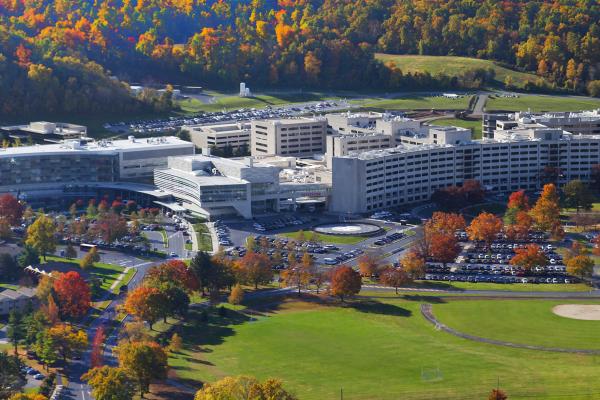The gallbladder is an organ in your abdomen that stores bile, a digestive juice produced by the liver. Gallbladder cancer develops in the cells that line the gallbladder wall. It can become an invasive cancer (spread outside the lining) within five to 15 years.
Gallbladder cancer is relatively uncommon in the United States - about 11,740 new cases per year, according to the American Cancer Society.
It affects more women than men. The most frequent type of gallbladder cancer is adenocarcinoma. This accounts for 98 percent of cases.
Treatment
The type of treatment depends on whether the tumor is resectable or unresectable:
- Resectable means the cancer can likely be removed during surgery.
- Unresectable means the cancer is too difficult to remove or that it has spread too far.
Fewer than 10 percent of patients are diagnosed with resectable tumors. For patients with resectable gallbladder cancer, complete removal of the gallbladder is the only cure. If the cancer has spread, portions of nearby organs or lymph nodes may need to be removed.
Some patients need additional treatment after surgery, like chemotherapy or radiation therapy. This treatment helps reduce the risk of tumor recurrence.
Chemotherapy and radiation therapy may help manage symptoms.
At Penn State Cancer Institute, we also offer the following supportive services:
- Musical therapy
- Nutrition
- Palliative care
- Physical therapy
- Psychology
- Social work
Meet the Team
Prevention and Screening
Gallbladder cancer risk factors include:
- Age. Gallbladder cancer is most common in people 65 or older.
- Being a female. Women are at higher risk for gallbladder cancer.
- Bile duct abnormalities. The pancreas releases fluids into the duct, which flows to the small intestine. This helps with digestion. Abnormalities can cause the fluid to flow back up into the pancreas. This seems to increase rates of gallbladder cancer.
- Certain chemicals. Some researchers believe workplace or environmental chemicals may increase the risk of gallbladder cancer.
- Choledochal cysts. These cysts are small sacs filled with bile that connect to the bile duct.
- Ethnicity. Native Americans and Mexican Americans experience higher rates of gallbladder cancer. These groups are also more likely to have gallstones.
- Family history. You may be at increased risk if someone in your family has had gallbladder cancer.
- Gallbladder polyps. These are growths on the gallbladder wall.
- Gallstones. Small “pebbles” of cholesterol and other materials that collect in the gallbladder. They can lead to chronic inflammation in the body.
- Obesity. Being obese can increase your risk for gallstones, which is another risk factor.
- Porcelain gallbladder. This occurs when calcium deposits cover the gallbladder wall. It can also lead to chronic inflammation.
- Primary sclerosing cholangitis. This condition causes scarring and inflammation in the bile ducts.
- Typhoid. This disease, which is rare in the United States, is caused by salmonella infection. People with typhoid are at increased risk of gallbladder cancer.
Patients with primary sclerosing cholangitis may benefit from annual abdominal ultrasonography for screening.
Symptoms and Diagnosis
The gallbladder is an organ in your abdomen that stores bile, a digestive juice produced by the liver. Gallbladder cancer develops in the cells that line the gallbladder wall.
Symptoms
Gallbladder cancer symptoms can be non-specific, such as:
- Abdominal pain
- Lack of appetite
- Weight loss
Another common sign is jaundice, or yellowing of the eyes and skin.
Patients often have no symptoms until the disease has progressed.
Diagnosis
If your doctor suspects a problem with your gallbladder, he or she may order the following tests:
- Blood tests for liver functions
- Abdominal ultrasound
The following tests can determine how far gallbladder cancer has spread:
- Endoscopic ultrasonography. Your doctor will insert a thin tube with a camera at the end through your mouth or anus. The camera allows your doctor to look at your gallbladder and other organs.
- Contrast-enhanced CT or MRI scans of the chest, abdomen and pelvis. Your doctor may have you ingest something that will temporary change how the inside of your body looks in scans. This helps them see your organs and any abnormalities more clearly.
- Diagnostic cholangiography. Your doctor will take X-rays of your bile duct.
Outlook & Prognosis
Even if a tumor is operable, most patients have recurrent tumors.
For patients diagnosed with gallbladder cancer, the average length survival is six months. The five-year survival rate is 5 percent.
Support Groups
Support groups provide an opportunity to share your feelings and connect with other patients and caregivers who are experiencing similar struggles.
Convenient Locations
Find the care your family needs, close to home, at one of our many locations throughout central Pennsylvania.
Find a location near you


